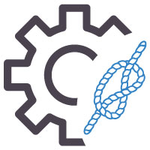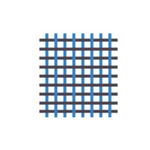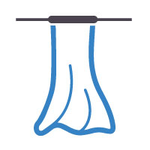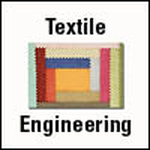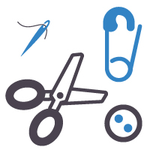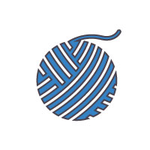
Textile Design Course Details - Fees, Subjects, Syllabus, Duration, Eligibility, Career Scope
Degrees offered: Diploma, B.Des, M.Sc., B.Sc., B.A.(Hons)
What is Textile Design
Fashion Design is the art of applying fashion, imagination and natural beauty to costumes and lifestyle accessories. Fashion design continues to progress through time and from place to place, with a variety of social and cultural attitudes. A fashion design career has started to gain popularity among the imaginative, as this highly competitive profession has a wide scope both in India and abroad. Students have countless opportunities in front of them upon finishing their specialized Design studies. They can enter the fashion industry or manufacturing and exporting units for paying jobs or launch their own brand on the marketplace. But to achieve that point, it's essential to know the basics of this fast-growing field. Different clothes and accessories are created for the use of expertise in this field. Here, we have explored the entire field of fashion design with eligibility requirements, qualifications, essential skills, most sought after institutions, key research areas, reach, profiles of jobs, recruitment of major workers, average salary and many more.
Fashion Design Course Highlights
Particulars | Values |
Branch Name | Fashion Design |
Degree | B.Des, M.Des, B.Sc, M.Sc |
Duration | B.Des (3 years) M.Des (2 years) B.Sc. (3 years) M.Sc. (2 years) |
Eligibility | B.Des and B.Sc. (10+2 any specialisation) |
M.Des and M.Sc (Bachelor's degree) | |
Admission Process | B.Des and B.Sc. (Entrance test / Cut off) |
M.Des and M.Sc (Entrance test / Cut off) | |
Top Entrance Exams: | CEED, NID DAT, NIFT examination, IICD, IIAD, AIEED UCEED |
Course Fees | B.Des and B.Sc. (Rs. 20,000 to Rs. 1,00,000) |
M.Des and M.Sc (Rs. 2,00,000 to Rs. 3,00,000 per year) | |
Top Colleges | NIFT Bangalore - National Institute of Fashion Technology Visva Bharati University - Visva-Bharati NIFT Chennai - National Institute of Fashion Technology NIFT Hyderabad - National Institute of Fashion Technology MSU Baroda - Maharaja Sayajirao University of Baroda |
Career Options | Fashion designer, Jewellery designer, Textile designer, Merchandiser, Fashion influencer |
Average Salary | Rs. 6.5 LPA |
Recruiting Companies | Pantaloons, Sabyasachi Mukherjee, Orient Craft, Snapdeal, Oracle, Pantaloon, Shoppers Stop, Amazon, Benetton, Pearl Global |
Eligibility Criteria (UG & PG) of Textile Design
In this section, we've discussed the requirements for Fashion Design, which is one of the most popular courses in the design field. The eligibility requirements for the Fashion Design course are nearly identical to those for the other courses. If you match the prerequisites, you will be admitted to the most prominent institutions and universities. The eligibility criteria for undergraduate and graduate programmes are stated below.
Eligibility Criteria UG Courses
Candidates who want to pursue a fashion design course immediately after completing their 10+2 have a variety of possibilities. There are numerous colleges and institutions from which to pick. A few key criteria to note for eligibility are listed below.
Students seeking admission in Fashion Designing courses at UG level must have passed their class 12th examination with not less than 50 per cent from a recognised board in India.
They may have to appear for entrance exams like NID DAT, UCEED and NIFT.
Top Entrance Exams for UG Courses
UCEED: UCEED is taken by a large number of students seeking admission in UG courses for design, including fashion design. The entrance exam is conducted by IIT Bombay, and it covers as many as 24 colleges.
NIFT Entrance Exam: NIFT is one of the most prestigious institutes for fashion and designing. NIFT conducts its entrance exams for various UG and PG courses offered at the institute. NIFT is headquartered in Delhi and has its branches in 15 other major cities of India.
- |
Eligibility Criteria for PG Courses
Individuals who are interested in pursuing a fashion design education can apply to a variety of colleges and institutes. Some of the criteria to keep in mind for PG eligibility are listed below.
Students applying for PG courses in Fashion Designing must have passed bachelor’s programme in a related field with not less than 50 per cent from a recognised college/ university in India.
They may have to appear for entrance exams like IIAD, CEED, NID DAT and many others.
Top Entrance Exams for PG Courses
Common Entrance Examination for Design (CEED): IIT Bombay conducts the CEED for students seeking admission into Master of Design courses including Master of Design in Fashion Design. A great number of colleges accept CEED scores for admissions.
- |
NID DAT: NID is one of the pioneers in offering fashion education in India. NID offers Bachelor of Design and Master of Design courses and students seeking admissions in any of these courses need to clear NID DAT Prelims and NID DAT mains. Browse more information about NID DAT.
Specialization or Similar Ones
There are numerous Fashion Design courses and specialties to choose from. After obtaining the degree, those with similar specialities may have similar job opportunities. Specializations in design, animation, graphics, and other fields are available to students. The following are some of the fashion design specialisations:
Top Fashion Design Colleges in India
India has some of the greatest fashion design schools in the world, with alumni going on to build some of the world's most prominent luxury and retail brands. A list of notable colleges in India that offer a Fashion Design degree is as follows:
Colleges | Fees |
Rs. 1,310,400 | |
Rs. 706,000 | |
Rs. 1,310,400 | |
Rs. 470,000 | |
Rs. 613,100 | |
Rs. 740,000 | |
Rs. 1,188,000 | |
Utkal University of Culture, Bhubaneswar | - |
- | |
Manipal University (MAHE) - Manipal Academy of Higher Education | Rs. 740,000 |
Top Private Fashion Design in India
There are numerous colleges in India that provide Fashion Design courses. The admissions process for this programme is based on both merit and entrance exams. Tuition costs vary in price from one college to the next. The following are the top private fashion design colleges in India.
Colleges | Fees |
- | |
Rs. 1,426,000 | |
Rs. 400,000 | |
Rs. 1,680,000 | |
Rs. 900,000 | |
Rs. 672,000 | |
MSRUAS Bangalore - MS Ramaiah University of Applied Sciences | Rs. 801,000 |
- | |
Srishti Manipal Institute of Art, Design and Technology, Bangalore | Rs. 2,447,100 |
Rs. 980,000 |
Top Government Fashion Design Colleges in India
Fashion design courses are available at a number of colleges in India. This degree's admissions process is based on both merit and entrance exams. The cost of tuition varies from one university to the next. The following is a list of India's best government colleges for Fashion Design.
Colleges | Fees |
Rs. 1,109,000 | |
- | |
RTMNU Nagpur - Rashtrasant Tukadoji Maharaj Nagpur University | - |
Rs. 174,000 | |
Rs. 826,500 | |
Rs. 49,500 | |
Rs. 6,800 | |
Rs. 816,500 | |
Government MH College of Home Science and Science for Women, Jabalpur | Rs. 21,661 |
Rs. 623,100 |
Top Fashion Design Colleges in States
In the realm of design, there are numerous job opportunities. As a result, it looks that a Fashion Design degree has a bright future. The top Fashion Design universities in each state are listed below:
College Predictors VIEW ALL
Scope of Textile Design in India and Abroad
The Fashion industry and businesses related to it are growing every day, encouraging a global appeal of its services. Its growing prospects have developed high demands of courses related to fashion at various levels of academics. The everyday use of fashion in terms of clothes, interiors, jewellery or products has widened the horizons of the discipline and has been engaging a lot of students and recruiters lately. The international as well as domestic fashion businesses have amplified which have opened career choices for fashion design aspirants. Students who are able to successfully complete their courses in Fashion Design get recruited by international and domestic fashion brands and companies, magazines, big labels and can even start their own independent fashion business.
Popular Online Design Courses and Certifications
Course Fees Textile Design
| Minimum Fees | Maximum Fees | |||
|---|---|---|---|---|
| Private | Government | Private | Government | |
| UG | ||||
| PG | ||||
| DOCTORAL | ||||
| DIPLOMA | ||||
Course Subjects
The subjects of this course are set such that it maximises the candidate’s creativity. They expose one to several new techniques and trends, thus, keeping one on his or her toes. They help one hone the design skills and take it to the next level. The subjects in a particular semester in a college may vary from another college. Listed below are a few subjects in the course –
B.Des in Fashion Design Subjects
Semester-1 | |
Elements of Design | Fashion Illustration |
Introduction to Textile – Fiber to Fabric | Fundamentals of Computers |
Garment Construction – I | English and Communication skills - I |
Introduction to fashion | Basic of Design |
Semester-2 | |
Traditional Indian Textiles | Fashion Illustration – Figure drawing and rendering |
Fabric Studies (Woven & Knit) | Garment Construction – II |
Pattern Drafting | Basics Of Designs |
Fashion Communication | - |
Semester-3 | |
Computer Aided Design – I (MS paint, Adobe Photoshop, Corel Draw) | Advanced Garment construction - I |
Patternmaking for Basic Garments | .History of Costume |
Apparel Manufacturing Technology | Draping and Drafting |
Semester-4 | |
Fashion Presentation – Mood boards, client board, color board, Look board, Flat Sketches, Swatch board, etc | Advanced Patternmaking and Grading |
Apparel merchandising | Advanced Garment Construction-II |
World Art Appreciation | CAD (Illustrator & Pattern Making) |
Draping & Drafting-II | - |
Semester-5 | |
Fashion Photography | Accessory Design Module |
Apparel Marketing & Retail | Fashion Sales Promotion |
Advanced Draping | Craft documentation Project |
Advance Garment construction-III | Project- Summer Internship- Industrial Training |
Semester-6 | |
Entrepreneurship | Product Line Development & Presentation |
Fashion Portfolio | - |
M.Des Subjects
First Year | Second Year |
Consumption and popular culture | Introduction to marketing theory |
Environmental issues in relation to design | Visual design- principles and applications |
Introduction and critical overview of modernism and postmodernism | Introduction to design brand strategy and innovation |
Globalisation and its influence on the design | Issues of human resource management |
Models of design practice and professionalism | The designer’s task/model/role |
Introduction of design theory | Electives 3 and 4 |
Design product | Role of design within complex organisations |
Design ethics and the role of a user | Issues of creativity and innovation |
Electives 1 and 2 | Thesis |
Careers in Textile Design
The course of Fashion Design is not just about fashionable clothes; it is also about textiles, fabrics, knitwear, interior designs, jewellery designs and many more. A fashion design student can become a fashion designer, consultant, entrepreneur, and many other things.
Fashion Stylist | In order to achieve the best look of the show the stylist retains make-up, hairstyle, dress code. They look after the fashion shows or advertising services' design and beauty aspects. |
Fashion Designer | Fashion designers are major players in the design industry in the production of innovative designs with regard to the emerging trends on the market. You would have a decent reward for good earnings and benefits if you are imaginative enough to reach ahead and work hard to manage the pressure positively. |
Fashion Consultant | A fashion industry consultant should be aware of trends and changes in the sector and be aware of fashion design. Consultants deliver new concept ideas on a daily basis. They must be involved listeners who are immune to changing environments. |
Fashion Illustrator | This person prepares the key drawings of what the fashion designer wants and explains. An illustrator is the running hand of the designer's mental designs and ideas. |
Fashion Coordinator | The coordinator is responsible for and oversees the marketing strategies. It's not related to the design function. The organizer is responsible for marketing items, fashion shows. |
Fashion Merchandiser | Marketing is mainly a merchant's duty. Examination of past and current trends and revenue statistics are among the most significant outcomes. They gather feedback from customers and plan goods that fulfil customer demands with the designers/production team. A fashion merchant needs an understanding of fashion patterns, fabrics, texture, hues, etc. as well as consumer demand and production procedures. |
Also Read: How to Become Fashion Designer
Browse Fashion Design colleges in Top Location
Fashion design courses are available at a number of colleges in India. This program's admissions process is based on both merit and entrance examinations. The cost of attendance varies from one college to the next. The top Fashion Design colleges in India's major cities are listed here.
Upcoming trends
The present courses in Fashion Design have its lenses focused on developing more durable and sustainable designs which not only make fashion statements globally but also account for its relevance in a responsible way. Listed below are some emerging trends and topics in Fashion –
Sustainable Design as well as Production
Fashion Business Management
Digitisation
Revival Designs
Technology and Fashion
Innovative methods of designing including new pattern making techniques, use of IT applications, latest technology for manufacturing products, and adopting new marketing techniques, etc. have become the centre of emphasis in the course. Other than that, new fashion trends are always put up for analysis and research.
Job Profiles and Top Recruiters
There are a number of companies in India that hire people who have completed a Fashion Design course. Fashion Designers' profession and designation are determined by their educational credentials and expertise. Companies hire them for the positions and profiles listed above. The following are some of the most well-known recruiting firms:
Some of the top recruiters in the domain of fashion design are as follows –
Pantaloons
Levi’s
Van Heusen
Snapdeal
Ajio
Benetton
Swarovski India
ITC Limited
Sabyasachi Mukerjee
Rohit Bal
Varun Behl
Reid & Taylor
AND
Lifestyle
Allen Solly
Global Desi
Marks & Spencer
Shoppers Stop
Average Salary
The average annual salary for master students is approximately Rs. 6 lakhs p.a , while the average annual salary for the graduate program is approximately Rs. 4.5 lakhs p.a.
Careers | Average Salary |
Fashion Stylist | Rs. 2,40,000 – Rs. 10,00,000 |
Fashion Designer | Rs. 1,80,000 – Rs. 4,00,000 |
Fashion Consultant | Rs. 2,20,000 – Rs. 6,00,000 |
Fashion Illustrator | Rs. 2,00,000 – Rs. 5,00,000 |
Fashion Coordinator | Rs. 3,00,000 – Rs. 8,00,000 |
Fashion Merchandiser | Rs. 2,40,000 – Rs. 5,00,000 |
Required Skillset for Textile Design
Candidates wishing to pursue a career in textile designing must possess the following skillsets to have a better career graph:
Artistic and creative inclination | Knowledge of colour and texture, shades and fabric |
Good eye for detail | An interest in fashion and textiles, and an understanding of trends and materials |
Understanding market trends and fashion trends | Knowledge of computer-aided design (CAD) |
Excellent communication skills | Interest in illustration and sketching |
Must be innovative and willing to try new ideas | Good imagination |
Course Curriculum for Textile Design
A Fashion Design program aims to develop talented designers who can meet the rapidly evolving demands of the fashion industry. It also enables them to adapt to a changing fashion biosphere with strong artistic or technological skills in the field of fashion. The curriculum includes an expert learning combination and practical training which enables holistic development.
The Fashion Design curriculum is primarily based on designing techniques, textile, fashion illustrations, sketching, understanding various technologies used in fashion, analysing recent fashion trends, and lots and lots of drawings.
New fashion styles can be divided into different categories including tailored wearable (for masses, regular size) and high trendy (for customers).
Students also liked
Popular Textile Design Entrance Exams in India
Frequently Asked Questions (FAQs)
Question: Which entrance exams are required for Textile Design?
Answer :
Some top entrance examinations which are required for Textile Design are AIEED, UCEED, NID DAT.
Question: What skills are required for a Textile Design degree?
Answer :
The skills that are required for a Textile Design degree are Artistic and Creative Mind, Business Acumen, Strong Imagination, Great Observation Skills, Sketching and Drawing Skills, Research-oriented.
Question: What is the average salary Textile Design graduates are offered?
Answer :
The average salary of Textile Design graduates is Rs. 6 LPA.
Question: What is the required education qualification eligibility for bachelors in Textile Design admission?
Answer :
The candidate, to become eligible for an undergraduate program, must have qualified 10+2 examination or an equivalent from a recognised board or university in India with relevant specialisation. The criterion of minimum marks varies, but an aggregate of 50-60% is required by most of the colleges.
Question: What are career opportunities after Textile Design?
Answer :
Some of the job profiles for students after Textile Design are Textile Designer, Fashion Designer, Fabric Analyser, Home Furnishings Designer, Design Consultant, Fabric Resource Manager, Freelance textile artist.
Question: What are the top Textile Design colleges?
Answer :
Top Textile Design colleges are NIFT Bhopal - National Institute of Fashion Technology, Mody University - Mody University of Science and Technology, National Institute of Fashion Designing, Bhubaneswar, MGM Institute of Fashion Design, Aurangabad, Central India Institute of Mass Communication, Nagpur, NID Bhopal - National Institute of Design Madhya Pradesh.
Question: What are top Textile Design recruiters of fresh graduates?
Answer :
The areas where the graduates get hired are: Corporate houses, Garment manufacturing unit, Shopping malls, Boutiques.
Question: What are top Textile Design Employers?
Answer :
Top Textile Design employers: Raymond Apparel Ltd, Silver Spark Apparel Ltd., Pantaloons. Lifestyle, Spykar, Adidas, Bata, Swarovski, Reid & Taylor.
Question: What is the average Textile Design fee?
Answer :
The average Textile Design fee is Rs. 20,000 to Rs. 1,00,000.
Question: What is Textile Design?
Answer :
Textile Designing is a creative process by which different kinds of clothing is prepared by methods of weaving threads or yarns and also by using dyeing, embroidery and printing methods. The textiles prepared in this process are used for various purposes such as clothing on furniture, towels, carpets, rugs, drapes, and walls with a sound control system, wallpapers, gifting materials and many other everyday usable products.
Questions related to Textile Design
I completed Diploma in Textile Technology ( Textile Design and Weaving ). Am I eligible for BBA? If anyone sees this please do answer. Thanks in advance.
Hello Sibi
Yes you are eligible for pursuing BBA program after diploma textile technology.
Bachelor of business administration in textile designing is a three years Course, each year having 2 semesters .
The tution fees for bba Course is 90,000 to 2 lakh depending upon college.
Eligibility criteria for pursuing BBA in textile designing
The candidate must have passed class xii or having diploma in relevant field with minimum 50% marks from any recognized university
Salary offered after BBA in textile designing is 2 lakh per annum , there will be hike in salary aftef few years experience .
https://www.careers360.com/courses/textile-technology-course
Hello , I have completed graduation in bcom can I prefer for NIFT master in textile design or I have to do from bachelor and entrance exam is required in cat
Dear Aspirant!
Typically, NIFT (National Institute of Fashion Technology) offers Master's programs directly without a mandatory requirement of completing a Bachelor's program from NIFT. Therefore, you can indeed apply for a Master's in Textile Design at NIFT after completing your B.Com.
Elaboration:
1. Eligibility Criteria: Check the specific eligibility criteria for the Master's in Textile Design program at NIFT. They may consider graduates from various disciplines.
2. Entrance Exam: While NIFT does conduct entrance exams for its programs, the specific requirements and exams may vary. Check the admission guidelines and prepare for any required entrance exam accordingly.
3. Portfolio: In addition to academic qualifications and entrance exams, NIFT often considers a portfolio of your work. Prepare a portfolio showcasing any relevant projects or design work you have done.
4. Application Process: Follow the application process outlined by NIFT. This involves submitting required documents, filling out application forms, and paying application fees.
5. Interviews or Group Discussions: Some programs may require interviews or group discussions as part of the selection process. Be prepared to discuss your interest in textile design and your future goals.
Remember to regularly check the official NIFT website or contact their admission office for the most accurate and up-to-date information regarding eligibility, entrance exams, and admission requirements for the Master's in Textile Design program.
is there any diploma courses related to carpet and textile design?
Hello aspirant,
In the current labour market, the field of carpet and textile technology is slowly gaining popularity. It focuses on the design of carpets while dealing with the manufacture, processing, production, and design of textiles. Graduates in carpet and textile technology are in high demand in the fashion and textile manufacturing industries.
In India, there are numerous institutions, colleges, and fashion schools where you can enrol in a textile design programme. You can apply to NID, NIFT, or Pearl. You must take an entrance exam for NIFT and NID. You now have a textile design diploma and a bachelor's degree .
For more information you can visit our site by clicking on the link given below.
https://www.careers360.com/courses/carpet-and-textile-technology-course
Thank you
Hope this information helps you.
what is the scope of textile design in i dia?
Hi aspirant,
Textile Design has decent scope in India. You can even get private or government job by having degree in Textile Design.
As India is developing, the need of Textile is increasing. So the scope is also there for Textile Design graduates.
You can study Bachelor's degree in Textile Design after completion of 12 th standard. Also, you can go for further studies like Post Graduation Diploma or Post Graduation Diploma in Textile Design.
Jobs which you can get are listed below.
-Medical Textile Engineer - Rs 3 Lakhs per annum
-Production Engineer - Rs. 4 Lakhs per annum to Rs. 4.5 Lakhs per annum
-Operation or Management Trainee - Rs. 2 Lakhs per annum
-Quality Control Supervisor - Rs 1.75 Lakhs per annum to Rs. 2 Lakhs per annum
Hope this information was helpful to you.
All The Best!!
What they teach In the department of (Textile Design) in NIFT colleges? Mention all the things thanks :)
Textiles designing is all about creating fabrics, creating design, printed febric yarns, dying, Embroidery, design Development there are huge demand of Textile in market , we can See textiles everywhere.
B. des of textiles design or other related courses include following subject in it.
-
Introduction to textile
-
Structure fabric design
-
Conputer Application 1& 2
-
Structure design 1 &2
-
Textile Art &craft
-
Computer aided Textile design
-
Traditional Textile
-
Fashion design and illustrate
-
Color &creation
-
Febric construction
-
Garment construction
-
Textile dying and Printing
-
Adobe illustrator
-
Figure and profile
-
Fashion market
-
Fashion ornamentation
-
Textile chemistry
-
Basic of garment market




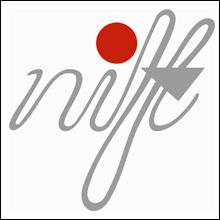
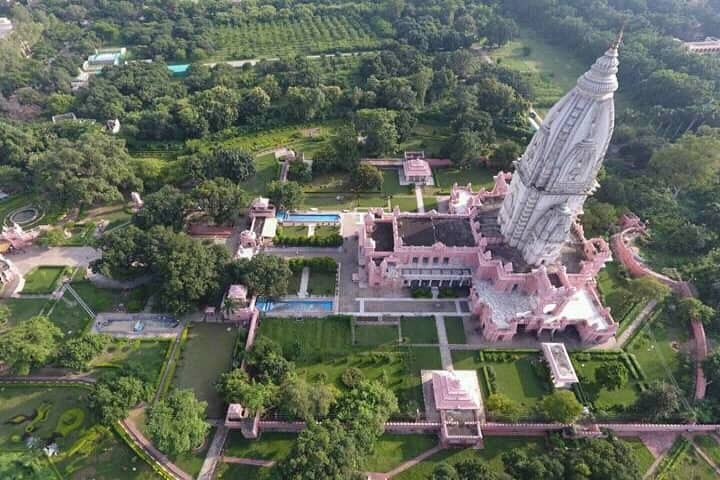

.jpg)
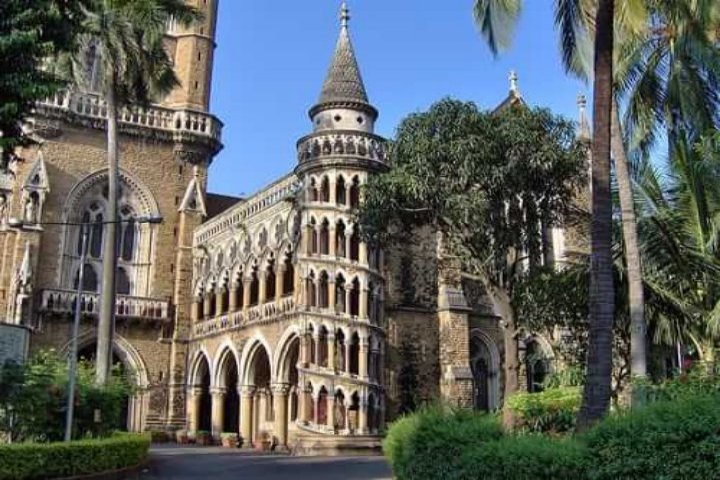
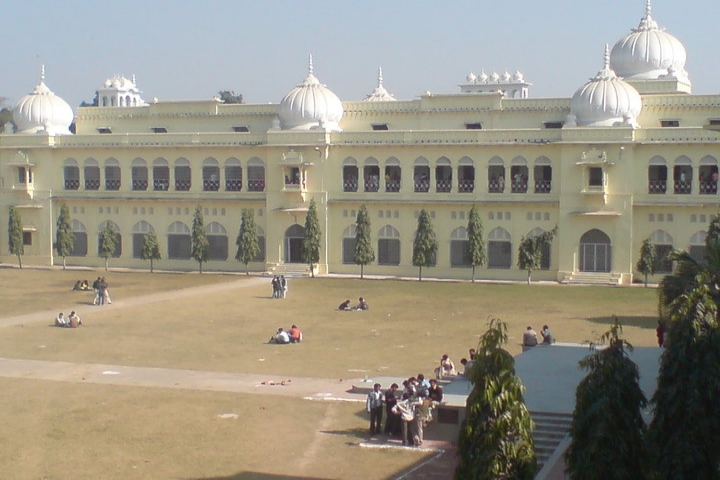
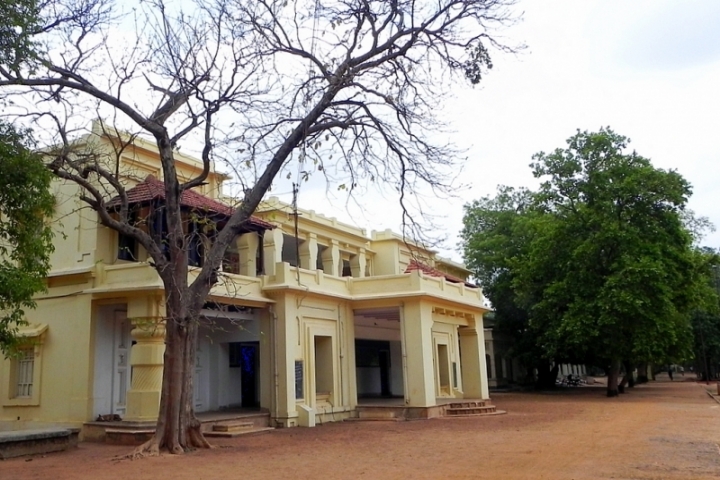


 Answer later
Answer later

